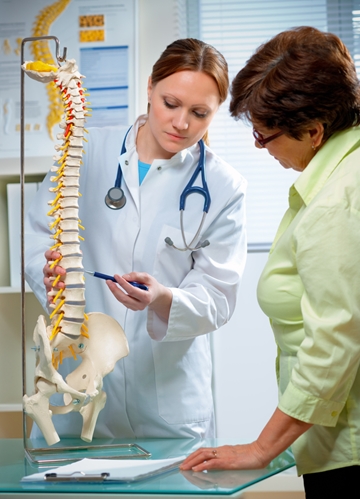Scoliosis patients can benefit from a single yoga pose a day
Since its start, yoga has been known to make those who practice it healthier and more flexible. However, a recent study has shown that it may do more than that. Researchers in New York, led by Loren Fishman, M.D., of the Columbia University College of Physicians and Surgeons, discovered that executing one yoga pose every day could improve spine curvature for patients with scoliosis. The study was published in the journal Global Advances in Health and Medicine.
What is scoliosis and how does it affect us?
According to the National Institute of Arthritis and Musculoskeletal and Skin Diseases, scoliosis is a sideways curve of the spine or backbone. Depending on how drastic the curve is, some people with scoliosis are regularly treated for the condition, impacting the lives of nearly 6 million people in the U.S. alone.
Scoliosis most commonly affects children from ages 10 to 12 years old and through their early teens, but is frequently found in patients of all ages. In many circumstances, the condition is treated with surgery or bracing, but doctors usually treat patients with a curve of less than 45 degrees with a nonsurgical approach.
The bracing technique is common for children with scoliosis, especially teenage girls, as there are approximately 30,000 who are given a brace that must be worn at all times for 23 hours every day. This has been proven to correct the sideways curve as children grow. After they are fitted with a brace, they must do at least 30 minutes of exercise each day to further prevent the spine from curving, according to the NIAMS.
The side plank may be the cure
Researchers hoped the study would find an alternative for adolescents diagnosed with a curvature in their spine who must undergo a series of measures to ensure their recovery. For example, according to Medical News Today, orthopedic documentation shows that patients have to participate in 40 two-hour sessions over the course of several weeks once their doctors decide to use the bracing method of treatment.
"Since many scoliosis patients are adolescent girls, the unwieldy bracing and lengthy exercising is socially awkward, emotionally painful and physically difficult," said Fishman. "And yet untreated scoliosis can progress at 7 percent per year, and result in disability and life-threatening health risks."
Fishman and his colleagues executed the study to see just how much of an impact doing the side plank each day can have on those with scoliosis. There were a total of 25 subjects between the ages of 14 and 85 with idiopathic scoliosis, which is a curve of the spine without a known cause. After the participants were closely examined by radiologists, they were shown how to properly execute the side plank.
The participants were told to do the position for 10 to 20 seconds each day for the first seven days of the study and then to continue doing the pose each day for as long as they were able. Aside from doing their best to execute the pose correctly, they were also instructed to pose on the side their spines were curved toward. This made the curved muscles stronger to begin curve reduction.
How effective is it?
The subjects' spines were measured before and after the 6.8 month duration of the study. The average number of participants spent 1.5 minutes doing the pose for about six days a week every week.
The study concluded that doing the side plank improved spine curvature by about 32 percent for most of the subjects. Spine curvature improved by 40.9 percent for the patients who did a side plank for three or more days each week, while of these participants, adolescents benefited the most with a 49.6 percent improvement. Adults saw a 38.4 percent improvement.



